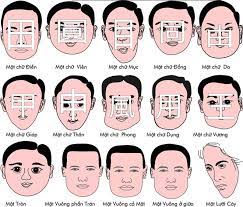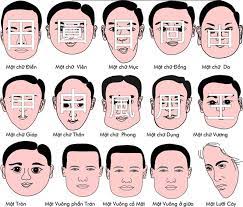Facial Signs and Their Meanings – Unlocking the Secrets of Facial Expressions
Welcome to our website dedicated to exploring the fascinating world of facial signs and their profound meanings. Our faces are a window into our emotions, thoughts, and inner states. By understanding the various facial signs and their significance, we can gain valuable insights into human communication and the intricacies of non-verbal expression.

Let’s delve into the different facial signs and their meanings:
- Smiles:
A genuine smile is a universal sign of happiness, warmth, and friendliness. It conveys a positive and welcoming attitude. Different types of smiles, such as a polite smile, a mischievous smile, or a sincere smile, carry distinct meanings and intentions. Understanding the nuances of smiles can help us interpret social cues and build stronger connections with others. - Frowns:
Frowns typically indicate displeasure, sadness, or worry. They convey a negative emotional state and can serve as a signal for support or empathy. By recognizing frowns, we can respond compassionately and offer assistance when needed. It’s important to be mindful of the context and other accompanying facial expressions to fully grasp the underlying emotions. - Raised Eyebrows:
Raised eyebrows can signify surprise, curiosity, or skepticism. They often accompany moments of astonishment or disbelief. Understanding the subtle variations in eyebrow movement can help us interpret the speaker’s response to a situation or a statement. It’s essential to consider other facial cues and verbal communication to accurately comprehend the intended message. - Eye Contact:
Eye contact is a powerful non-verbal cue that communicates engagement, interest, and attentiveness. Maintaining eye contact during conversations signals respect and genuine connection. However, cultural and personal preferences can influence the duration and intensity of eye contact. Paying attention to eye contact can help us gauge the level of rapport and engagement in social interactions. - Microexpressions:
Microexpressions are fleeting facial expressions that occur within a fraction of a second. They can reveal genuine emotions that people may attempt to conceal. These brief movements can convey hidden feelings such as surprise, disgust, or anger. Learning to recognize and interpret microexpressions can provide valuable insights into underlying emotions and intentions. - Blushing:
Blushing is a physiological response characterized by reddening of the face, particularly the cheeks. It often signifies embarrassment, shyness, or heightened self-consciousness. Observing blushing can offer clues about a person’s emotional state and their level of comfort in a given situation.
Understanding facial signs enhances our ability to navigate social interactions, strengthen relationships, and communicate effectively. It’s important to note that interpreting facial expressions should consider cultural, individual, and situational factors. Context, verbal communication, and other non-verbal cues should be taken into account for a comprehensive understanding.
Explore our website further to delve into the intricate world of facial signs and non-verbal communication. Discover more about the nuances of facial expressions, learn to read emotional cues, and enhance your communication skills. Join us as we unlock the secrets of the face and deepen our understanding of human interaction.
Please remember that while facial signs offer valuable insights, it’s essential to approach interpretation with empathy, sensitivity, and respect for individual differences. Each person is unique, and non-verbal cues should be considered in conjunction with verbal communication for a comprehensive understanding.

